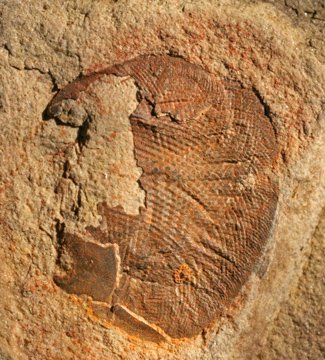Complex vision evolved earlier than thought

COMPLEX VISION MAY HAVE evolved much earlier than thought, according to Australian researchers who made a surprise discovery.
Scientists from the South Australian Museum and the University of Adelaide examined several 515 million-year-old fossils from Kangaroo Island and found they had highly evolved ‘compound eyes’ with more than 3000 lenses each.
“For their age, these eyes are way more complex than any that have ever been found before,” says Dr Jim Gehling, palaeontologist at the South Australian Museum. “They’re as sophisticated in their arrangement as the eyes of flies, dragonflies, shrimps, crabs … That’s what makes this really spectacular.”
The team concludes that sharp vision must have evolved very rapidly soon after the first predators appeared 540 million years ago. “The speed at which things get complex is always surprising,” says Jim. “Within a few million years you’ve got the sort of eye which would hold its own in any modern ocean.”
Compound eyes, found in many modern-day invertebrates, function very differently from the eyes of humans and other mammals. A compound eye has a separate nerve for each lens, which then connects back to the brain, says Jim. “What [the animal] sees is a mosaic of images.”
Because the fossils weren’t found with other remains, it is unclear, though, what creature once saw through the eyes. But the team believes the animal was probably a large shrimp-like invertebrate that live in shallow seas.
‘Pickled’ fossils
Peculiar environmental conditions at the discovery site on Kangaroo Island have helped the fossils stay intact for hundreds of millions of years, the scientists say.
“In very few places in the world do you get what the Germans call a ‘lagerstätte’ – a very special preservation of creatures that you don’t normally see,” says Jim. “This was an environment that was somehow without oxygen, so that things which would normally have rotted away were actually ‘pickled’ … Every now and then you crack open a rock and it’s like a photograph – everything’s in pristine condition.”
Jim believes other sites in Australia may contain similar fossils just waiting to be discovered. “There’s every chance that if we actually had enough palaeontologists to work through areas like the Flinders Ranges and Central Australia, we’d find other deposits like this,” Jim says. “It’s still a virtually unexplored land from the point of view of fossil history.”
The rocks in which the fossilised eyes were found also contained remnants of other sea creatures, including armoured worms and large swimming predators – some of which are new to science. “In the last three years we’ve been doing systematic excavation [of the site] and it’s just producing a wealth of beasts,” says Jim. “Watch this space because there are some even more exotic things that have turned up.”
Professor Jochen Zeil, an ecological neuroscientist from the Australian National University (ANU), says the discovery is significant. “It pushes back the time at which sophisticated eyes existed – several tens of million years earlier than we knew,” Jochen says. “So that’s exciting.”
However, Jochen believes the shape of the compound eyes means the animals may have been terrestrial creatures. The curved lenses found on the fossil eyes are “weird”, Jochen says, “because it would indicate that these animals lived on land…Underwater, a curved lens is ineffective.”
VIDEO: Discovery of a complex eye fossil
RELATED STORIES

